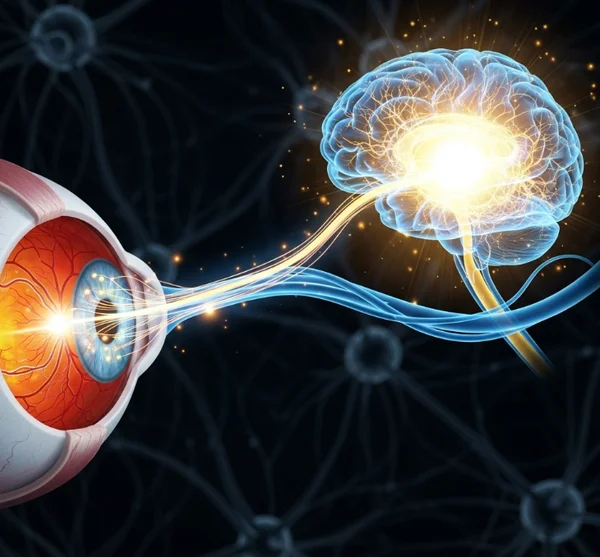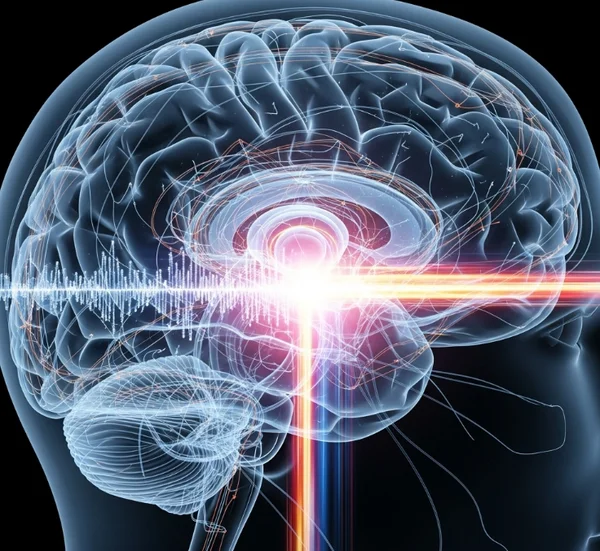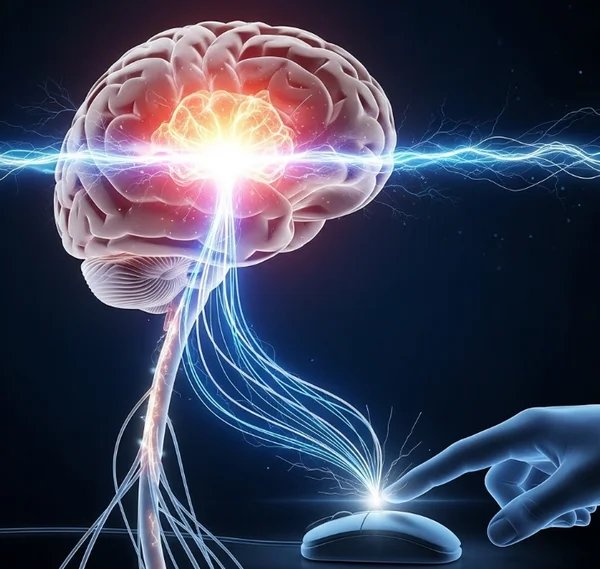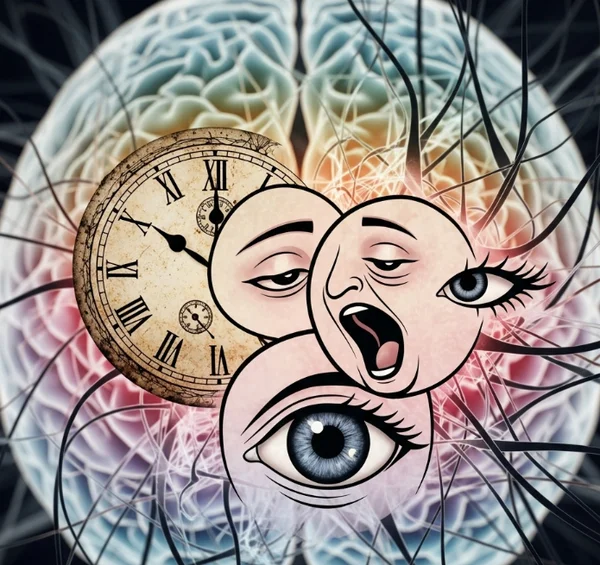The Neuroscience Behind Your Reaction Time: From Eye to Action
Ever wondered how your brain orchestrates every millisecond of a reaction time test? From the moment you see a signal to the instant your finger moves, an incredible journey unfolds. What is a good reaction time and how does your brain make it happen? This article delves into the fascinating biological and neurological processes that dictate your reaction speed, helping you understand the "why" behind every millisecond. You can test your reflexes and apply this knowledge right now.
The Sensory Spark: How Your Brain Sees a Stimulus
Your journey to a quick reaction begins with sensing the world around you. For a visual reaction speed test, this starts with your eyes capturing light. This initial phase is crucial, setting the stage for all subsequent neurological events. Understanding it helps grasp the foundation of your human reaction time.
From Light to Signal: The Role of the Eye and Optic Nerve
When you participate in a visual click test, the first step is your eyes detecting the light change (e.g., from red to green). Photoreceptor cells in your retina, specifically rods and cones, convert this light into electrical signals. These signals are then transmitted along the optic nerve to the brain. This conversion from a physical stimulus to an electrical impulse is the fundamental basis of all sensory processing, demonstrating the precision of our nervous system.

The Brain's Visual Hub: Decoding in the Visual Cortex
Once the electrical signals travel along the optic nerve, they reach the brain. A key stop is the visual cortex, located at the back of your brain. This specialized area is responsible for interpreting the raw visual data. Here, the signals are processed, allowing your brain to recognize the specific visual cue that prompts your reaction. This rapid decoding is an essential component of swift brain reflexes.
The Brain's Inner Highway: Neural Pathways & Processing Speed
After your brain registers the visual stimulus, the real internal work begins. The signal must navigate a complex network of neurons and relay stations before a decision can be made and an action initiated. This section explores these vital connections.
The Relay Race: Thalamus to Cortex
From the visual cortex, the processed information often makes a quick stop at the thalamus. Acting like a central relay station, the thalamus directs these sensory signals to the appropriate higher-level processing areas in the cerebral cortex. This ensures that the message gets to the right destination for a rapid response. This efficient routing is a cornerstone of quick neural pathways for a fast reaction time test.

Simple vs. Choice Reaction: Different Brain Journeys
Not all reactions are created equal. In a simple reaction test, like the one available here, you're only required to respond to a single stimulus as quickly as possible (e.g., click when you see green). The neural pathways for this are relatively direct. However, a choice reaction involves multiple stimuli and corresponding responses, requiring additional cognitive processing to select the correct action. This adds complexity and generally increases reaction time, as your brain needs to make a decision, showcasing the different ways your brain reflexes operate. To understand your pure reaction speed, try our basic reflex test.
The Action Command: From Motor Cortex to Muscle Response
The final stage of a reaction involves your brain sending out the command to act. This is where thought transforms into physical movement, culminating in your finger pressing a button in a click test.
Orchestrating Movement: The Motor Cortex's Role
Once your brain has processed the visual cue and decided to react, the command originates in the motor cortex. This area, located in the frontal lobe, plans and executes voluntary movements. It generates electrical impulses that travel down the spinal cord, setting in motion the chain of events that leads to your physical response. The efficiency of your motor cortex directly influences how quickly you can initiate an action, making it a critical part of your overall reaction speed test performance.

Sending the Signal: Down the Spinal Cord to Muscles
From the motor cortex, the signals travel along efferent neural pathways through the spinal cord. These pathways act as high-speed data cables, delivering the command directly to the specific muscles required for the movement – in this case, the muscles in your finger. Upon receiving the signal, your muscles contract, leading to the physical action of clicking. This entire process unfolds in mere milliseconds, showcasing the incredible speed of your brain reflexes. Curious about your own speed? Measure your human reaction time on our site.
Key Factors Influencing Your Reaction Time (Beyond Biology)
While the underlying biology is fundamental, several other factors can significantly impact your reaction time. These external and internal elements contribute to variations in your performance, answering questions like what causes slow reaction time?.
Attention, Focus, and Anticipation
Your mental state plays a huge role in your reflex test performance. Optimal attention allows you to quickly register the stimulus. Sustained focus prevents distractions from slowing you down. Anticipation, while not always present in simple reaction tests, can sometimes give a slight edge, though it can also lead to false starts. A lack of these cognitive elements can easily cause slow reaction time, even with perfect biological pathways. Staying alert is key when you take a reaction time test.
The Impact of Age, Fatigue, and Lifestyle
Various physiological and lifestyle factors can influence your human reaction time. Generally, age tends to correlate with a slight decline in reaction speed as neural processing slows down. Fatigue significantly impairs your ability to react quickly, as your brain and body are not operating at peak efficiency. Furthermore, lifestyle choices such as nutrition, hydration, and overall physical health can also play a role. Understanding these factors can help you contextualize your average reaction time and explore ways to improve reaction time.

Unlocking Your Potential: Understanding Your Reaction Time
Every millisecond of a reaction time test showcases the incredible complexity and efficiency of your body's neural communication. Understanding this neuroscience reaction time connection empowers you to appreciate your own physiological capabilities and identify potential areas for improvement.
Now that you understand the incredible science behind every click, it's time to put your knowledge to the test! Measure your own reaction time and see the neural magic in action. Whether you're a competitive gamer, an athlete, or simply curious about your cognitive performance, our free tool offers a precise way to gauge your speed and help you on your journey toward better brain reflexes today!
Frequently Asked Questions About Reaction Time Neuroscience
What is a simple vs. choice reaction time?
A simple reaction time involves responding to a single, predictable stimulus as quickly as possible (e.g., clicking when a light turns green). A choice reaction time requires you to choose between multiple responses based on different stimuli (e.g., clicking left for a green light, right for a blue light). Choice reactions typically take longer due to the added cognitive processing of decision-making. You can measure your simple human reaction time accurately with our online reaction timer.
Is reaction time genetic, or can it be improved?
While there might be a genetic component to an individual's baseline reaction speed test capabilities, reaction time is definitely trainable and can be improved. Consistent practice, focused attention, and lifestyle adjustments (like adequate sleep and nutrition) can enhance your brain reflexes. To track your progress, regularly take a reaction time test.
What causes slow reaction time from a neurological perspective?
From a neurological perspective, slow reaction time can be caused by inefficiencies or damage in any part of the neural pathways involved in the reaction arc: impaired sensory input (e.g., vision), slower signal transmission, issues with information processing in the brain (like the visual cortex or motor cortex), or problems with nerve signals reaching muscles. External factors like fatigue, age, and distractions also contribute. To assess your current speed, try our free reaction time test.
How quickly can the human brain process visual information?
The speed at which the human brain can process visual information is incredibly fast, often occurring within tens to hundreds of milliseconds. The initial processing in the visual cortex is nearly instantaneous, but the total time to fully interpret a stimulus and initiate a motor response (your reaction time) involves several stages, as detailed in this article. To get an exact measure of your personal visual processing speed and subsequent motor response, start a click test on our website.